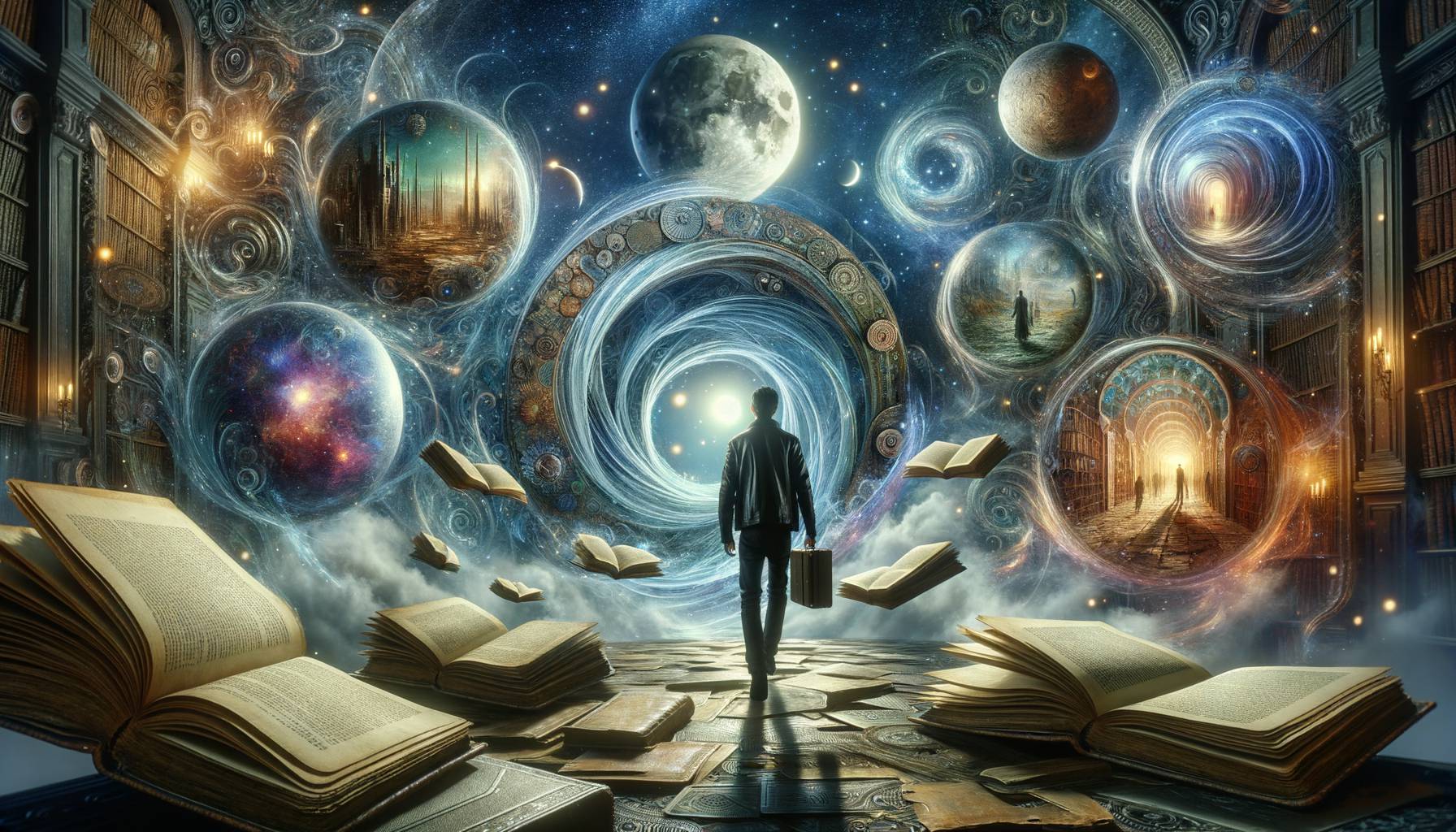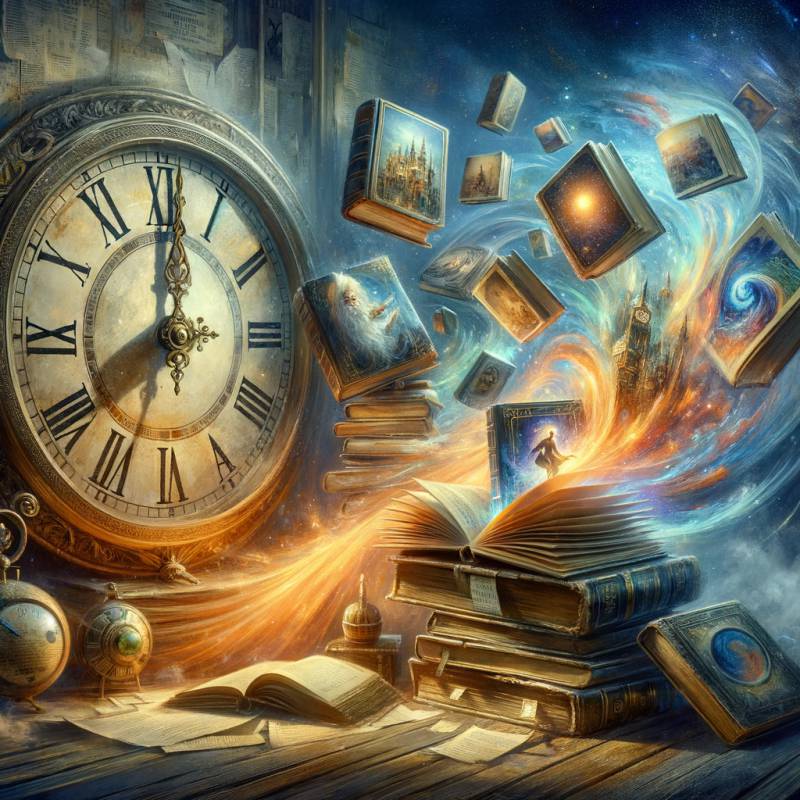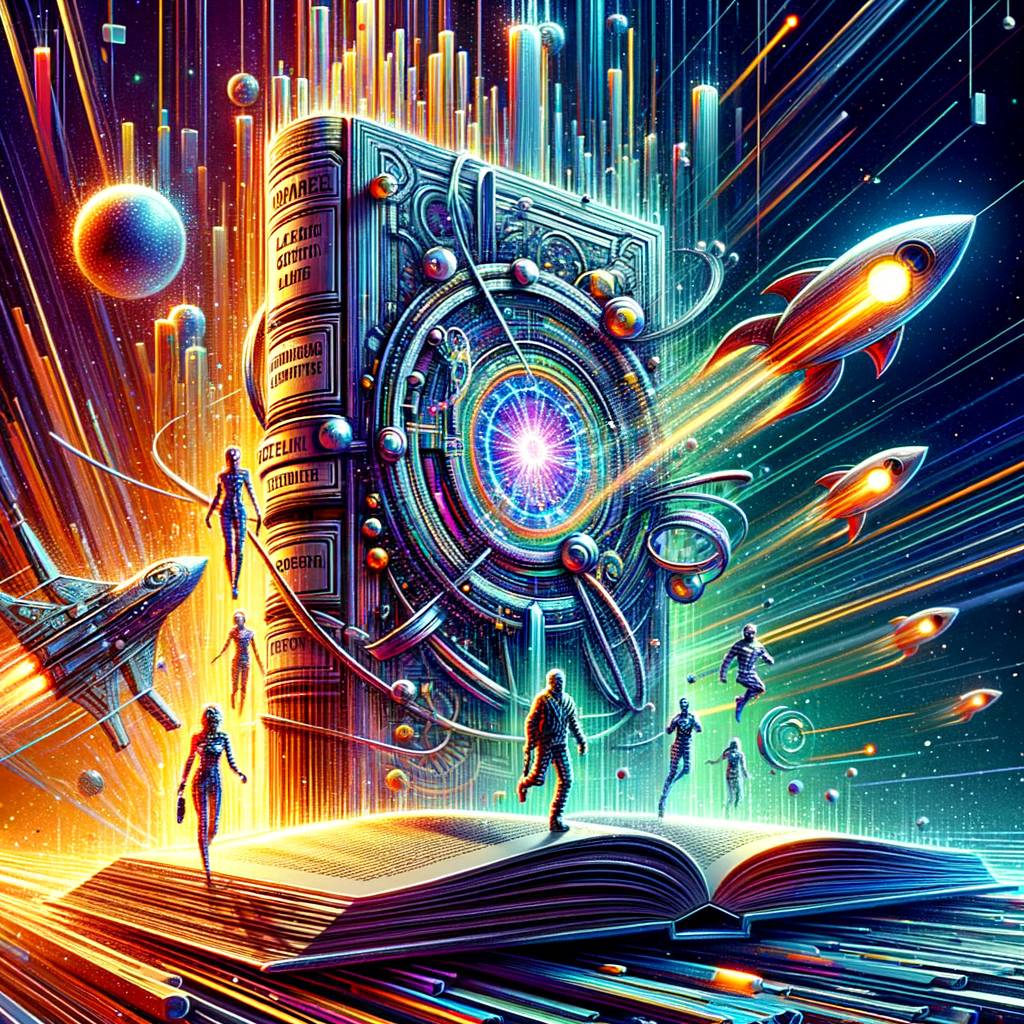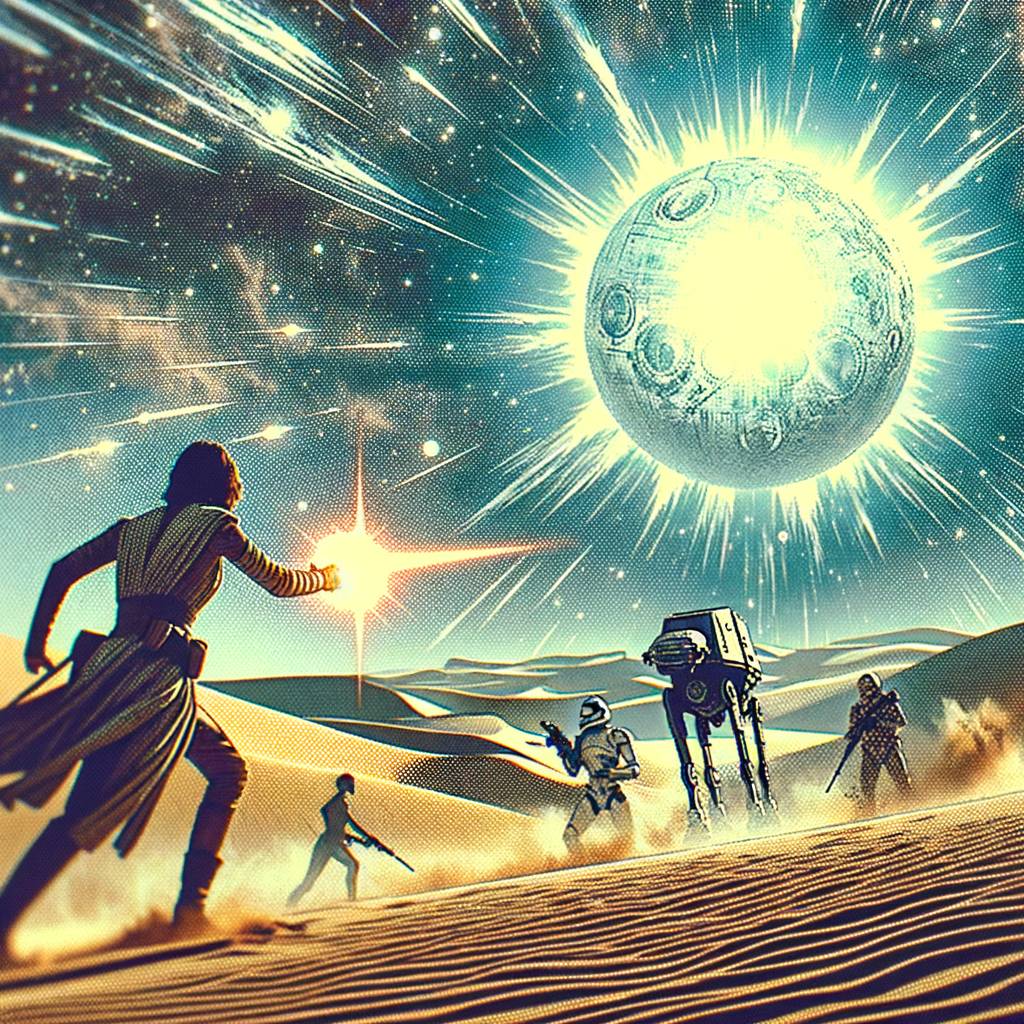Exploring the Concept of Time Travel in Sci-Fi Classics
Time travel, a concept that has fascinated humanity for centuries, has found a fertile ground in the realm of science fiction literature. The idea of moving through time, either forward into the future or backward into the past, has been explored in countless ways, each offering a unique perspective on the implications and possibilities of such a journey.
One of the earliest and most famous examples of time travel in literature is H.G. Wells’ “The Time Machine”. Published in 1895, this novel introduced readers to a Victorian scientist who invents a machine that allows him to travel through time. The narrative is filled with vivid descriptions of the future, where the human race has evolved into two distinct species, the Eloi and the Morlocks. Wells’ novel is not just a thrilling adventure, but also a social commentary on the class divisions of his time.
Transitioning from the Victorian era to the mid-20th century, we encounter another classic of time travel literature, “A Sound of Thunder” by Ray Bradbury. This short story presents the concept of the ‘butterfly effect’, where a small change in the past can have significant consequences in the future. The protagonist, Eckels, travels back in time to hunt a dinosaur and inadvertently steps on a butterfly, altering the course of history upon his return to the present. Bradbury’s tale is a cautionary one, warning of the potential dangers of tampering with time.
In contrast to these cautionary tales, some authors have used time travel as a tool for exploring philosophical and metaphysical questions. In Kurt Vonnegut’s “Slaughterhouse-Five”, the protagonist Billy Pilgrim becomes ‘unstuck in time’, experiencing events from his life in a non-linear fashion. This narrative device allows Vonnegut to explore the nature of time and existence, suggesting that all moments in time exist simultaneously and that life is a series of moments to be experienced rather than a linear journey.
Another intriguing exploration of time travel can be found in Audrey Niffenegger’s “The Time Traveler’s Wife”. This novel presents a unique twist on the concept, with the protagonist Henry involuntarily traveling through time, often to moments of emotional significance in his life. The narrative focuses on the impact of his time traveling on his relationship with his wife Clare, offering a deeply emotional and human perspective on the concept.
Finally, no discussion of time travel in literature would be complete without mentioning Michael Crichton’s “Timeline”. This novel combines historical fiction with science fiction, as a group of historians travel back in time to the Middle Ages. Crichton’s novel is a thrilling adventure, but also raises questions about the ethics of time travel and the potential for misuse of such powerful technology.
From H.G. Wells to Michael Crichton, the concept of time travel has been a staple of science fiction literature, offering authors a unique tool for exploring a wide range of themes and ideas. Whether used as a device for social commentary, a means of exploring philosophical questions, or simply as a plot device for thrilling adventures, time travel continues to captivate readers with its endless possibilities and implications. As we journey through these sci-fi classics, we are invited to ponder the mysteries of time, and perhaps even imagine what it might be like to step into a time machine ourselves.
The Evolution of Time Travel in Literature: A Deep Dive into Sci-Fi Masterpieces

Time travel, a concept that has fascinated humanity for centuries, has found a fertile ground in the realm of literature, particularly within the genre of science fiction. The idea of traversing the temporal landscape, of visiting the past or future, has been a cornerstone of countless narratives, offering a unique perspective on the human condition.
The concept of time travel first emerged in literature in the late 19th century, with H.G. Wells’ groundbreaking novel, “The Time Machine”. Wells’ protagonist, known only as the Time Traveller, journeys to the distant future, encountering strange societies and terrifying creatures. This novel not only introduced the concept of a machine that could transport its user through time, but also explored the social and philosophical implications of such a journey. Wells’ vision of the future was not a utopia, but a dystopia, a stark warning of the potential consequences of social inequality.
In the mid-20th century, science fiction authors began to explore the concept of time travel in more depth. In “A Sound of Thunder”, Ray Bradbury introduced the idea of the “butterfly effect”, where a small change in the past can have significant consequences in the future. Bradbury’s story follows a group of time-travelling hunters who accidentally alter the course of history, resulting in a drastically different present. This story highlighted the potential dangers of time travel, suggesting that even the smallest actions can have far-reaching effects.
Robert A. Heinlein’s “The Door into Summer” took a different approach to time travel. Instead of focusing on the potential dangers, Heinlein explored the personal implications of time travel. His protagonist, Dan Davis, uses time travel to right the wrongs in his life, ultimately finding happiness in the future. This novel suggested that time travel could be a tool for personal growth and self-improvement, a theme that would be explored in many subsequent works.
In the late 20th and early 21st centuries, authors began to experiment with the narrative possibilities of time travel. In “The Time Traveler’s Wife”, Audrey Niffenegger used time travel as a metaphor for the unpredictability of life and love. Her protagonist, Henry, has a genetic disorder that causes him to involuntarily travel through time, disrupting his life and his relationship with his wife, Clare. This novel used time travel to explore the complexities of human relationships, demonstrating how the genre can be used to illuminate the human experience.
In recent years, time travel has continued to evolve in literature, with authors using the concept to explore a wide range of themes. From the social commentary of H.G. Wells to the personal introspection of Robert A. Heinlein, to the narrative experimentation of Audrey Niffenegger, time travel has proven to be a versatile and powerful tool in the hands of skilled authors.
In conclusion, time travel in literature has come a long way since H.G. Wells first introduced us to the Time Traveller. It has been used to explore social issues, personal growth, and the complexities of human relationships. As we continue to grapple with the concept of time and our place within it, there is no doubt that authors will continue to use time travel as a means of exploring the human condition. The journey through time, it seems, is far from over.
Unraveling the Mysteries of Time Travel in Iconic Sci-Fi Novels
Time travel, a concept that has fascinated humanity for centuries, has found a fertile playground in the realm of science fiction literature. The idea of traversing the temporal landscape, of visiting the past or future, is a tantalizing prospect that has given birth to countless narratives. These stories, often wrapped in the cloak of scientific jargon and theoretical physics, offer readers a thrilling journey through time and space, while also exploring profound philosophical questions about fate, free will, and the nature of reality.
H.G. Wells’ “The Time Machine,” published in 1895, is arguably the first novel to popularize the concept of time travel. The protagonist, known only as the Time Traveler, journeys to the distant future, where he encounters two distinct species evolved from humans. The novel is a potent mix of adventure and social commentary, using the concept of time travel to critique the class disparities of Victorian England. Wells’ vivid descriptions of the future world and his imaginative use of scientific theories make “The Time Machine” a timeless classic in the genre.
Following in Wells’ footsteps, many authors have used time travel as a narrative device to explore various themes. In Kurt Vonnegut’s “Slaughterhouse-Five,” the protagonist Billy Pilgrim becomes “unstuck in time” after being abducted by aliens. The novel, a semi-autobiographical account of Vonnegut’s experiences during World War II, uses time travel to depict the horrors of war in a non-linear narrative. The disjointed timeline reflects the protagonist’s fragmented psyche, showing how time travel can be used to explore the human mind’s response to trauma.
Isaac Asimov’s “The End of Eternity” presents a different take on time travel. In this novel, a group of time-traveling ‘Eternals’ manipulate history to prevent potential disasters. However, their actions lead to unforeseen consequences, raising questions about the ethics of tampering with time. Asimov’s novel is a thought-provoking exploration of the butterfly effect, demonstrating how even the smallest changes in the past can drastically alter the future.
In contrast to these novels, Audrey Niffenegger’s “The Time Traveler’s Wife” uses time travel to explore the complexities of love and relationships. The protagonist, Henry, involuntarily travels through time, causing him to disappear and reappear at different points in his life. This unpredictable pattern puts a strain on his relationship with his wife Clare, leading to a poignant exploration of love, loss, and longing.
Finally, no discussion of time travel in literature would be complete without mentioning Michael Crichton’s “Timeline.” The novel follows a group of historians who travel back to the 14th century to rescue their professor. Crichton’s meticulous research and attention to historical detail, combined with his knack for suspenseful storytelling, make “Timeline” a thrilling adventure through time.
In conclusion, time travel in literature serves as a powerful narrative tool, allowing authors to explore a wide range of themes and ideas. From social commentary to psychological exploration, from ethical dilemmas to the intricacies of love, these stories offer readers a chance to ponder the mysteries of time. As we journey through these sci-fi classics, we are not just traveling through time; we are also embarking on a journey into the depths of the human condition, unraveling the complexities of our existence one page at a time.



